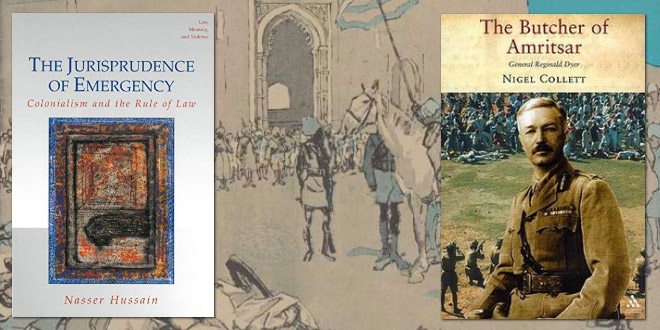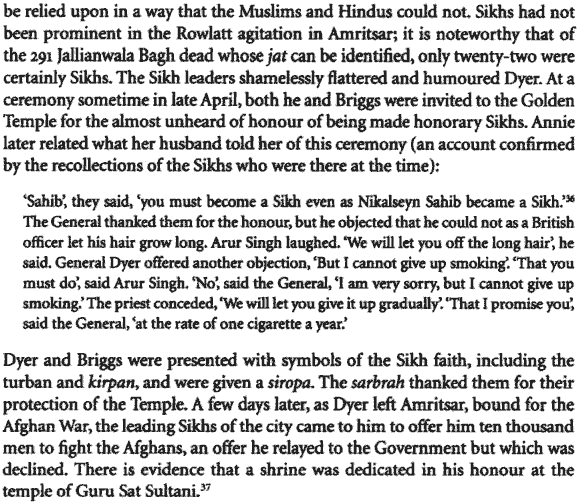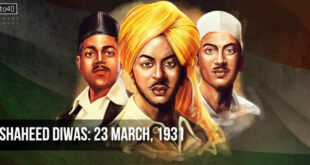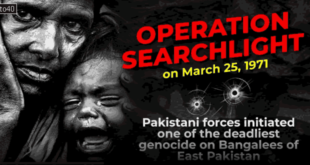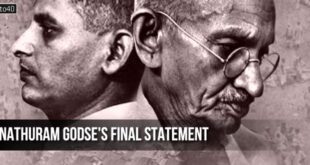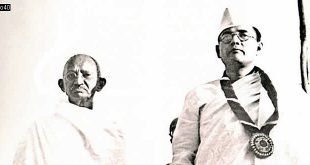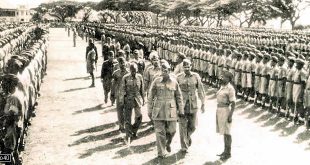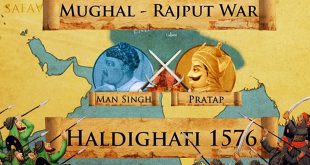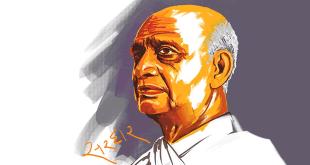“I fired and continued to fire until the crowd dispersed, and I consider this is the least amount of firing which would produce the necessary moral and widespread effect it was my duty to produce if I was to justify my action. If more troops had been at hand, the casualties would have been greater in proportion. It was no longer a question of merely dispersing the crowd, but one of producing a sufficient moral effect from a military point of view not only on those present but more especially throughout the Punjab. There could be no question of undue severity.”
General Reginald Dyer defending his actions on April 13, 1919, in Jallianwala Bagh
How Reginald Dyer, the General who ordered Jallianwala Bagh massacre, was honoured by some Indians
Jallianwala Bagh massacre by the British was one of the worst events in the history of India. As per British official records, 379 unarmed Indians were killed and 1100 were injured because of a British General’s merciless massacre in Amritsar’s Jallianwala Bagh. Other sources claim that the number of people killed was as high as 1000 and 1500 Indians had been injured in the massacre. Several accounts give different numbers. The General decided to fire upon the people gathered in the field because they had defied his orders not to step out.
The reason for the gathering as per some accounts was to protest against the arrest and deportation of two leaders Satya Pal and Saifuddin Kitchlew. Other accounts suggest that many of those who were present were unaware of the martial law order which banned gatherings in Amritsar.
An account of the tragedy according to a book ‘The Jurisprudence of Emergency‘ by Nasser Hussain [PDF] is reproduced below (emphasis added):
In Amritsar, 13 April 1919 was a day marked by the heat and dust characteristic of the Punjab at that time of the year. General Dyer, who had been in the city since 11 April, spent the morning marching around the city, reading a proclamation forbidding the residents from leaving the city or gathering in processions or assemblies. By 1:00 P.M., however, finding the weather too hot, he returned to his headquarters. Soon after, he received reports that an alternative procession during the morning was announcing a gathering at Jallianwala Bagh at 4:30 P.M.
The city was observing the fourth consecutive day of Hartal or general strike, and there were funerals being held for people shot by the military on 10 April. Adding to this tension was the fact that many people had come into the city from out of town, as it was the day of the Baisakhi festival—the Hindu New Year. It is estimated that by the afternoon some twenty thousand people had assembled in the bagh, some in open defiance of General Dyer’s proclamation, but others merely in the spirit of the festival, as the bagh was adjacent to the holy Golden Temple. By 4:00 P.M. General Dyer received information that the meeting was being held and immediately set out with his troops and armoured vehicles
Jallianwala Bagh was actually not a park or garden at all, but an unused ground in the shape of an irregular rectangle about 250 yards long and 200 yards wide. Houses built with their back walls to the area had effectively enclosed it on three sides. The fourth side had a boundary wall of around 5 feet, with a few narrow lanes serving as exits. Unable to get his armoured cars through these lanes, General Dyer approached the ground on foot and stationed his troops, twenty-five on either side of him.
Then without any warning, he opened fire. In the panic that followed, some people lay on the ground to avoid the bullets but were trampled as others rushed toward the exits. As the crowd thickened around such points, General Dyer directed the fire at them. The firing lasted for ten to fifteen minutes, and a total of 1,650 rounds of ammunition were used. Only after nearly running out of ammunition did General Dyer cease firing and withdraw, without determining the casualties or providing for any medical assistance. The official estimate, later on, was that 379 people had been killed, with thousands more seriously injured.
What is more insensitive was that some British conservatives cheered him and worse still, some Indian elites collected money for General Dyer as he was forced to retire from service for his brutal act. The Nobel Laureate Rudyard Kipling called him ‘the man who saved India’ and initiated collections for his homecoming prize.
The Governor of Punjab Micheal O’Dwyer supported Dyer’s actions. O’Dwyer was dismissed for his actions in Punjab in the subsequent year. In spite of this, both O’Dwyer and General Dyer had Indian and English admirers. They collected money worth 26,000 euros and presented it to Dyer. General Dyer was made an honorary Sikh as per the book ‘The Butcher of Amritsar: General Reginald Dyer‘ by Nigel Collet.
An article ‘How General Dyer was honoured by some Indians‘ in India Today claims that Governor O’Dwyer was also given a fund of rupees 1.75 lakh collected by Punjabi elite like Kunj Bihari Thapar, Umar Hayat Khan, Chaudhary Gajjan Singh and Rai Bahadur Lal Chand. It is indeed tragic to know that the British had such loyal support in India even after their brutal act in Jallianwala Bagh.
 Kids Portal For Parents India Kids Network
Kids Portal For Parents India Kids Network
